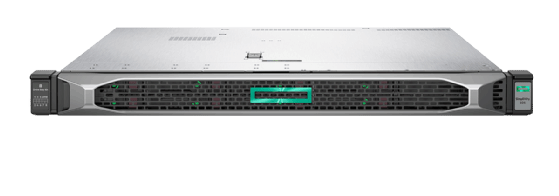
kentoh - Fotolia
HPE SimpliVity gains cloud backup and Kubernetes CSI plug-in
SimpliVity has added integration with HPE Cloud Volumes Backup and HPE StoreOnce to enable easier backup at the edge, as well as a new Kubernetes CSI plug-in.
Hewlett Packard Enterprise has updated its SimpliVity hyper-converged infrastructure platform with features aimed at bolstering the enterprise edge.
This week's SimpliVity 4.1.0 update mostly revolved around integration with other HPE products to enhance data protection for remote/branch offices. SimpliVity can now send backups directly to HPE's cloud backup service, Cloud Volumes Backup. Cloud Volumes data can be restored to on-premises storage or a cloud target, and it can be hydrated and attached to compute in AWS, Azure or Google Cloud Platform.
Prior to this update, customers had to use a third-party backup tool to orchestrate the movement of backup data from SimpliVity to a backup target, including to HPE's own Cloud Volumes Backup. The integration between SimpliVity and Cloud Volumes boils this process down to as few as six clicks, according to HPE.
Additionally, SimpliVity has added new integration with HPE StoreOnce appliances, allowing for automated, policy-based replication from edge sites to a centralized StoreOnce appliance. This serves use cases such as long-term retention and compliance.
Customers are recognizing the importance of their edge data, and this update was to ensure that SimpliVity customers have edge-to-core and edge-to-cloud options for data protection, said Sandeep Singh, vice president of storage marketing at HPE. Edge locations such as healthcare clinics, retail stores and bank branches are the primary point of transaction between some enterprises and their end customers.
"The enterprise edge has become the frontier of customer interaction, so it's strategic for organizations to pay attention to what's happening there," Singh said.

SimpliVity's 4.1.0 update also introduced support for Kubernetes container storage interface (CSI) through a new plug-in. This allows customers to run VM-based and container-based workloads on the same hyper-converged infrastructure (HCI) platform, simplifying management and saving customers the need to carve out separate infrastructure for containers. This plug-in also allows SimpiVity's data protection features to extend to containers.
The HPE SimpliVity competes most directly against other HCI platforms such as Nutanix, Dell EMC VxRail and VMware vSAN. One of SimpliVity's unique features is its two-node architecture with automatic replication between them. Other products achieve high availability using as many as seven nodes, according to Singh, who claimed with SimpliVity, a customer can recover a 1 TB VM in less than a minute.
SimpliVity's 4.1.0 release is ultimately a play for simplicity and cost efficiency, said Paul Nashawaty, senior analyst at Enterprise Strategy Group, a division of TechTarget. It's not that customers couldn't achieve cloud or centralized backup at the edge before, but now those capabilities are built into the SimpliVity platform. Customers frequently value convenience and ease of management alongside the more calculable cost savings, Nashawaty said.
The added Kubernetes support is a good move, too, Nashawaty said, as enterprises are pushing container development efforts even at the edge. Persistent volume support at the edge is important for supporting those efforts, and it's not something every vendor offers.
As containers move from concept to production, the next question enterprises logically ask is how they will protect their container environments, Nashawaty said. There's an efficiency gain in being able to store VMs and containers on the same infrastructure via SimpliVity, but the real value in the platform's added Kubernetes CSI support is that those containers at the edge are also protected.
"HPE SimpliVity has provided a holistic approach from the core to the edge, and adding in the data protection and container persistent volume support keeps it in line with, and to some extent ahead of, the competitive landscape," Nashawaty said.








